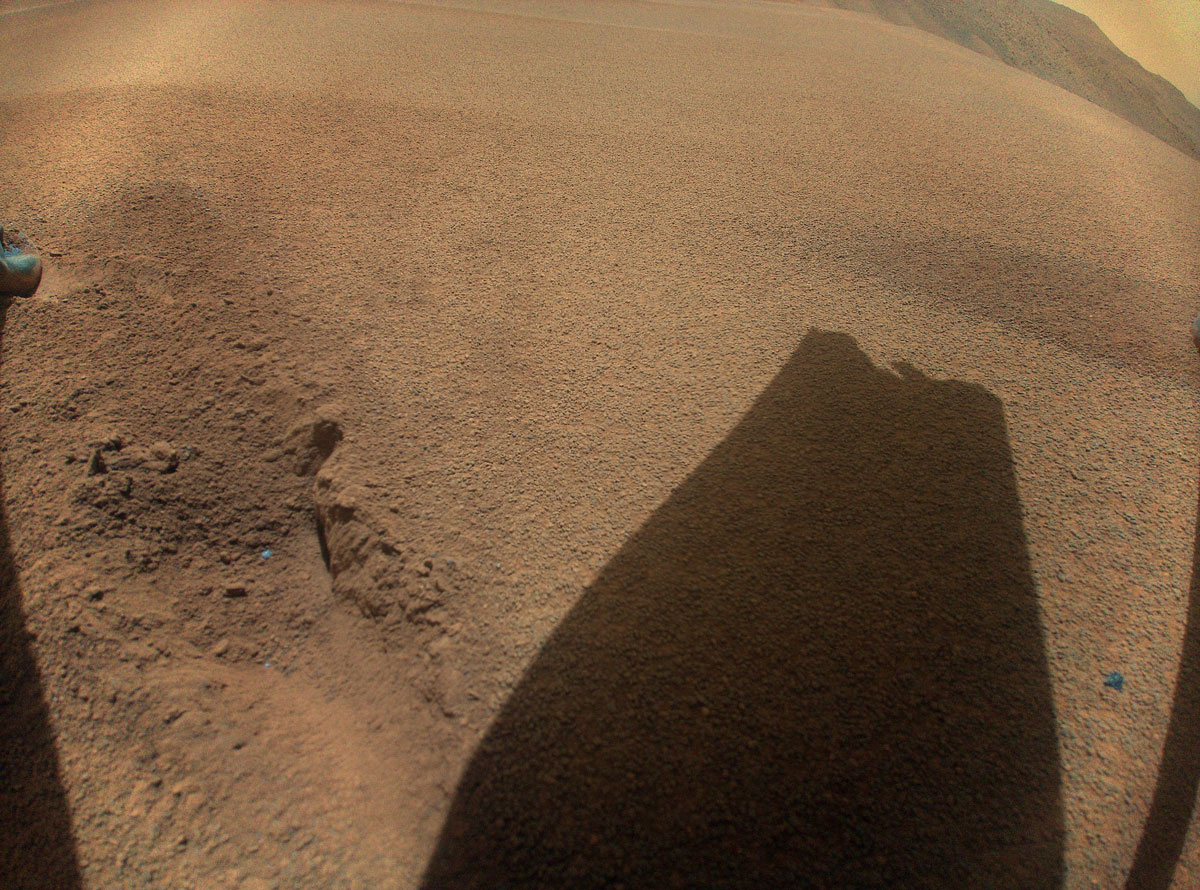
Flight on Mars: The Inspiring Journey of NASA's Ingenuity Helicopter
-by Dale Berger
Essco Aircraft is saddened to learn of the unfortunate end of the Mars Ingenuity Helicopter. Yet, amidst our melancholy, we marvel at its extraordinary accomplishments. Ingenuity, a testament to human innovation and perseverance, has opened new horizons in space exploration.
 After its 72nd flight on Jan. 18, 2024, NASA’s Ingenuity Mars Helicopter captured this color image showing the shadow of a rotor blade damaged during a rough landing.
After its 72nd flight on Jan. 18, 2024, NASA’s Ingenuity Mars Helicopter captured this color image showing the shadow of a rotor blade damaged during a rough landing.
This pioneering rotorcraft, the first of its kind on another planet, has paved the way for future missions and set a precedent for aerial exploration of Mars. In this article, we delve into the inspiring journey of NASA's Ingenuity Helicopter, celebrating its technological marvels, mission achievements, and the indelible mark it leaves on the annals of space exploration.
The Mars Ingenuity Helicopter stands as a pioneering achievement in space exploration, marking humanity's first attempt at powered, controlled flight on another planet. Launched as a part of NASA's Mars 2020 mission, it accompanied the Perseverance Rover, serving as a technological demonstration of new exploration capabilities. Ingenuity's success has profound implications for future missions, potentially transforming how we explore Martian landscapes and beyond.
Ingenuity's journey began at NASA's Jet Propulsion Laboratory (JPL), where a team of engineers embarked on the ambitious project of designing a helicopter capable of flying in Mars' thin atmosphere. Collaborating with organizations like AeroVironment, Ames Research Center, and Langley Research Center, JPL faced numerous challenges. The primary hurdle was creating a rotorcraft light enough to achieve lift in an atmosphere just 1% as dense as Earth's, yet robust enough to withstand the harsh Martian environment.
Ingenuity was tasked with a groundbreaking mission: to demonstrate powered flight in the Martian atmosphere. Initially planned as a 30-sol (Martian day) technology demonstration, it aimed to make five flights, each lasting up to 90 seconds and reaching altitudes between 3-5 meters. This mission was intended to prove the feasibility of aerial exploration on Mars, a concept that, if successful, would open new avenues for studying the Red Planet.
Ingenuity's innovative design features were key to its success. It boasts large, lightweight rotor blades, spinning at around 2,400 revolutions per minute – much faster than helicopters on Earth. Equipped with solar panels for recharging its batteries and autonomous flight controls, it was designed for complete independence. Its adaptation to Mars’ conditions included a heating mechanism to survive cold nights and a communication system to relay data back to Earth.
Defying expectations, Ingenuity not only succeeded in its initial flights but went on to conduct numerous additional sorties, providing valuable data and insights. It flew farther and longer than initially planned, demonstrating impressive resilience and adaptability. The helicopter aided the Perseverance Rover by scouting potential paths and points of interest, showcasing the benefits of aerial perspectives in planetary exploration.
The mission of Ingenuity came to an end due to rotor blade damage, marking the conclusion of a historic chapter in space exploration. Despite its untimely end, Ingenuity’s contributions have been monumental, paving the way for future missions that might incorporate aerial exploration as a standard component.

-Dale Berger has been immersed in aviation for over 40 years. A USAF veteran and private pilot since 1986, he has been Chief Inspector for 3 different avionics shops. He and his wife Kim currently own and operate Essco Aircraft, an aviation publications and pilot supplies business in Barberton Ohio.
